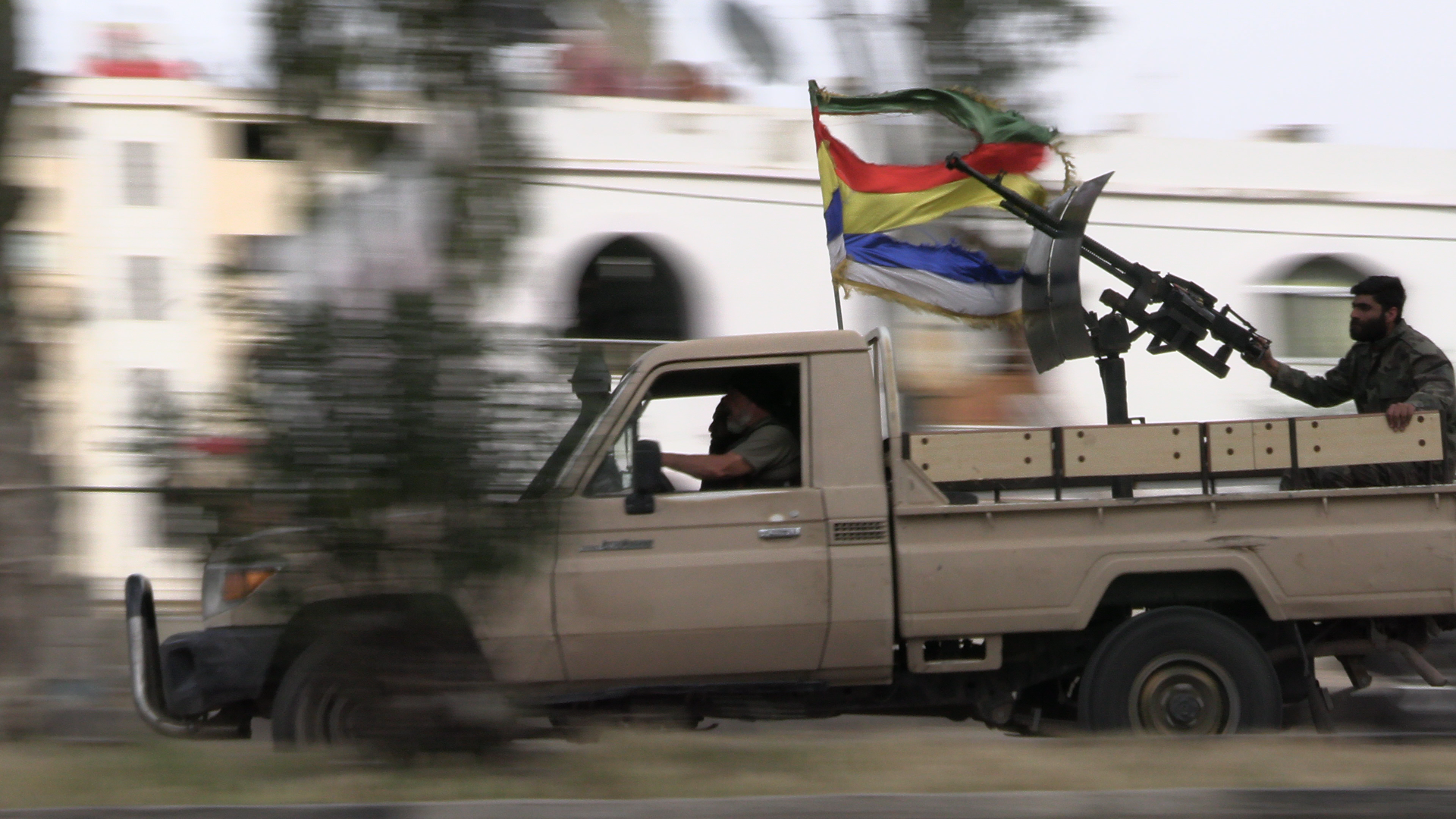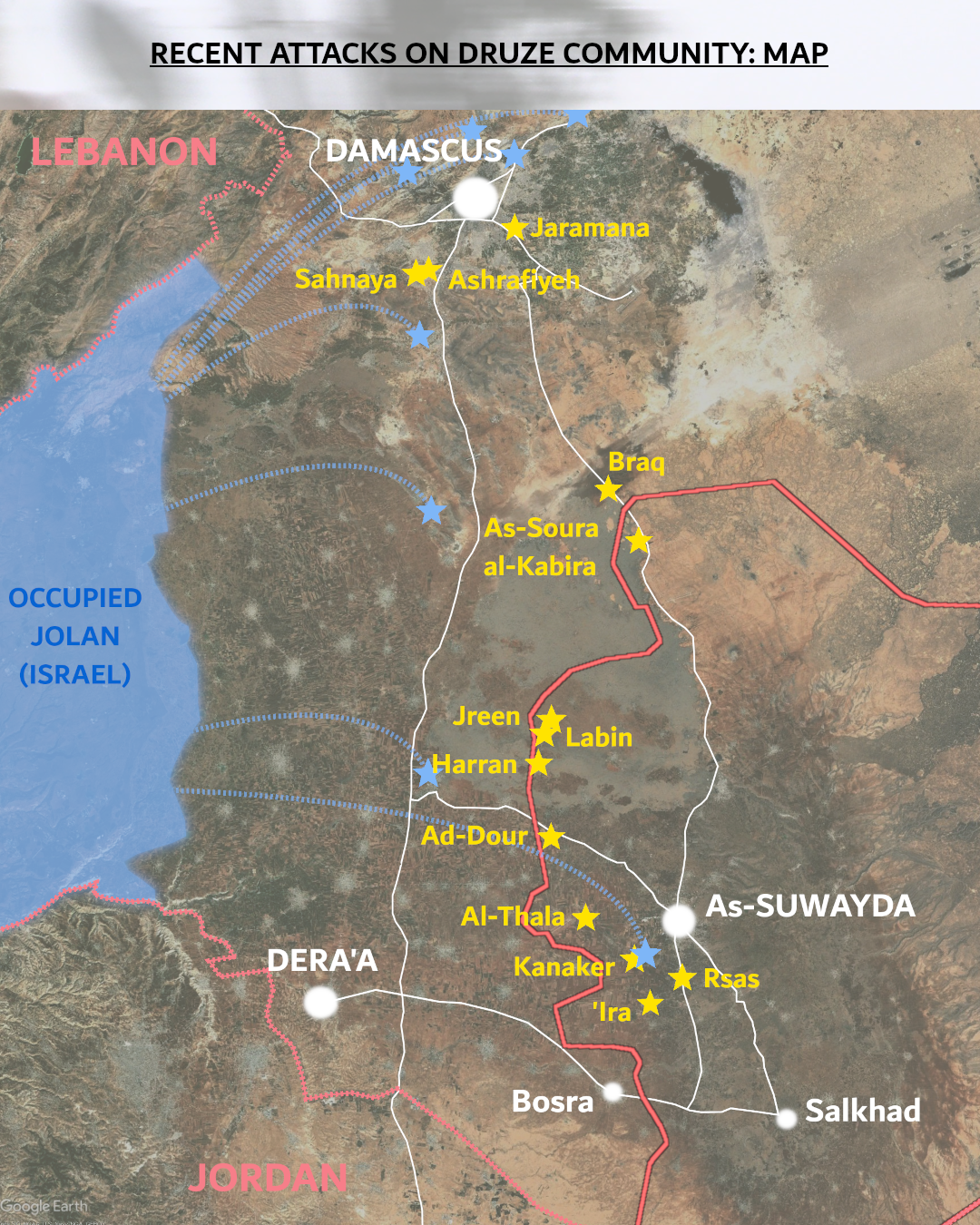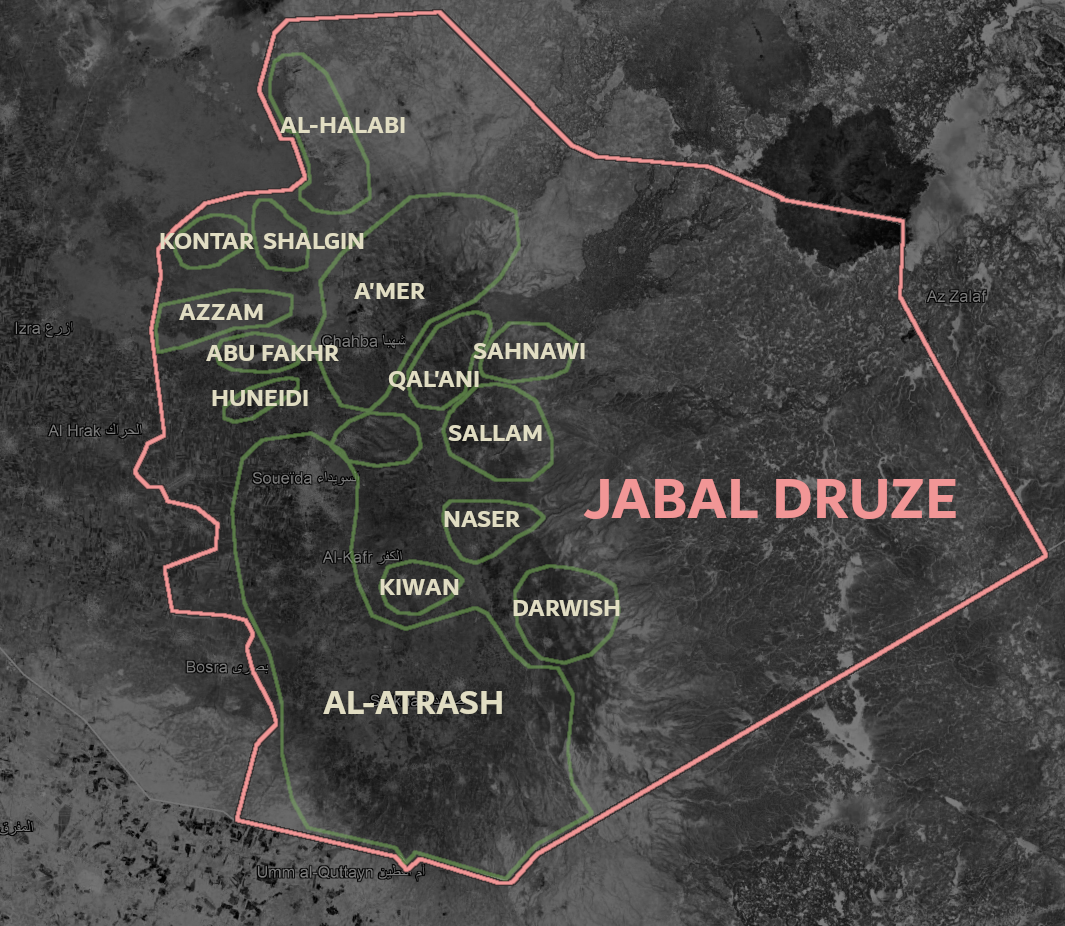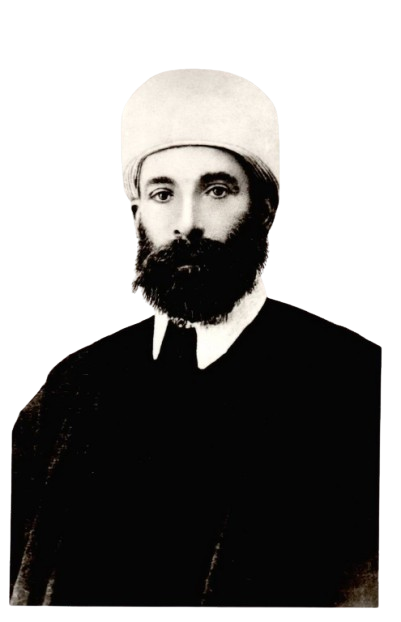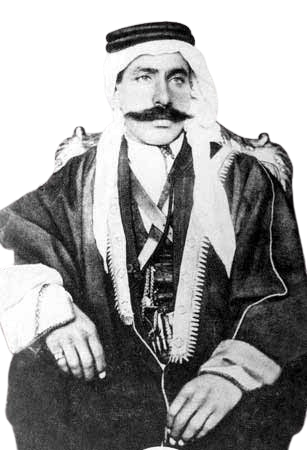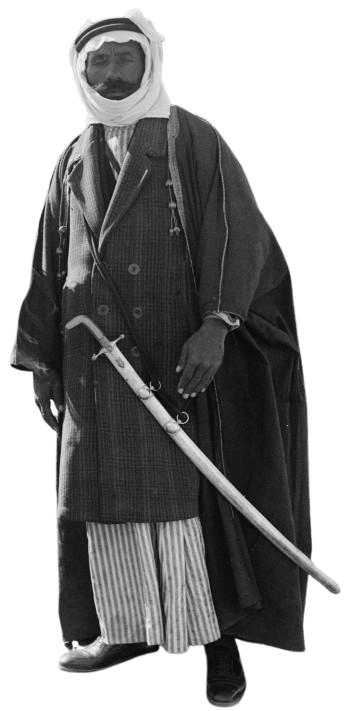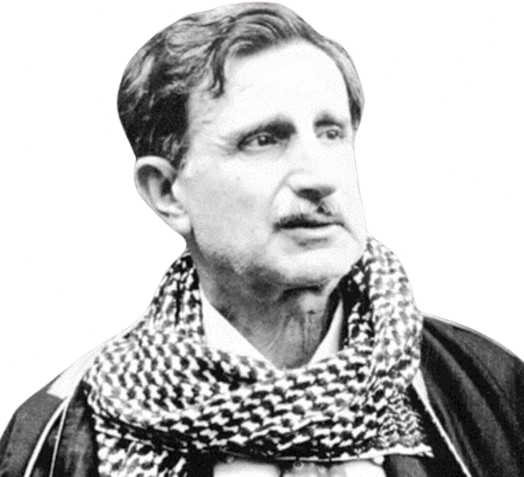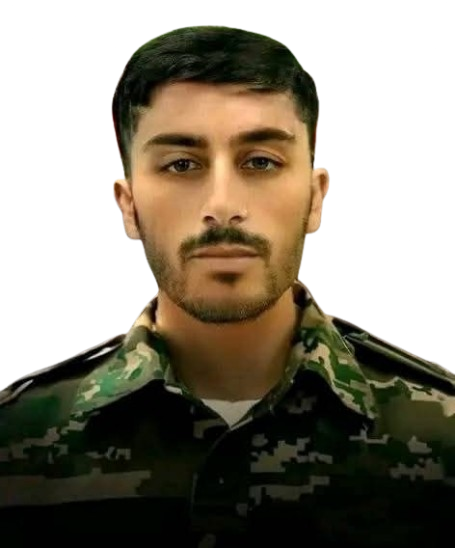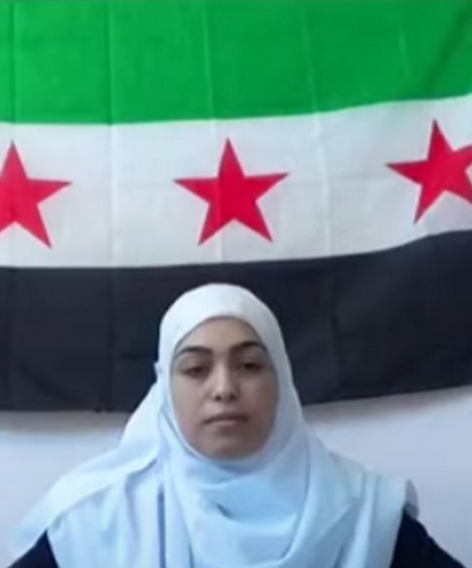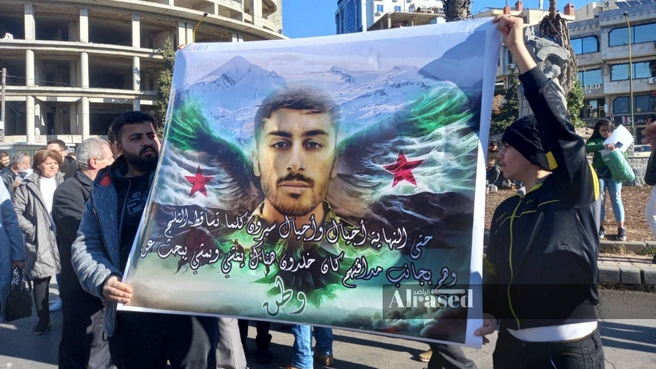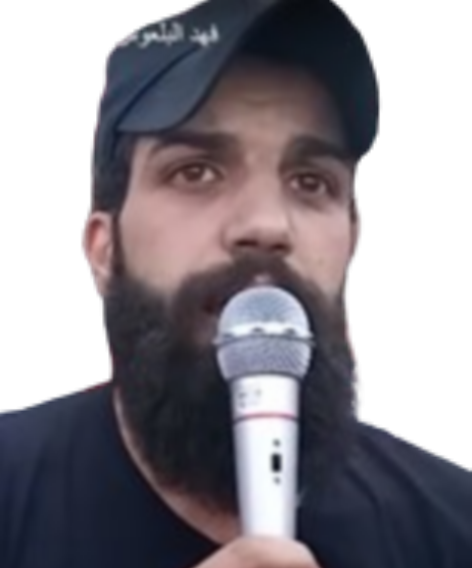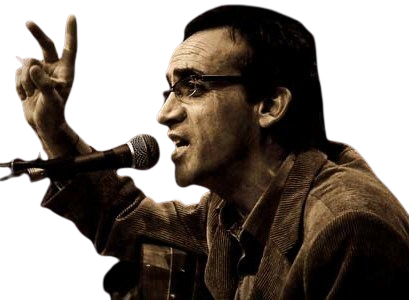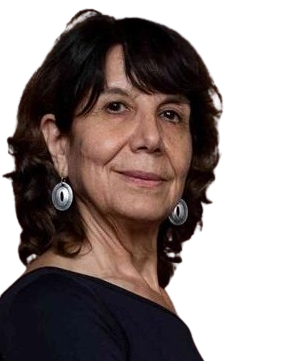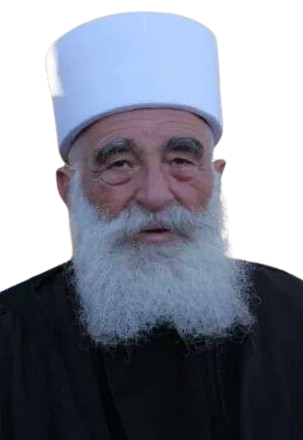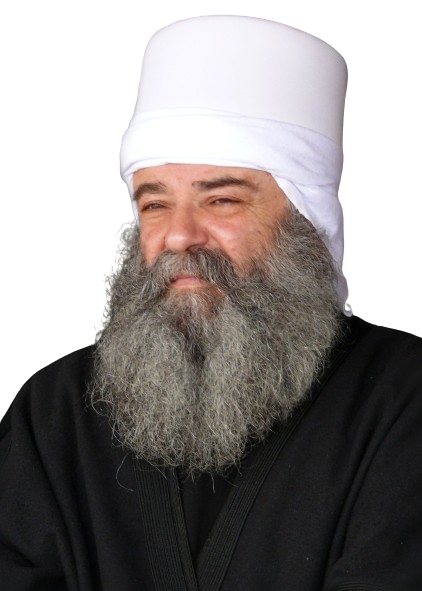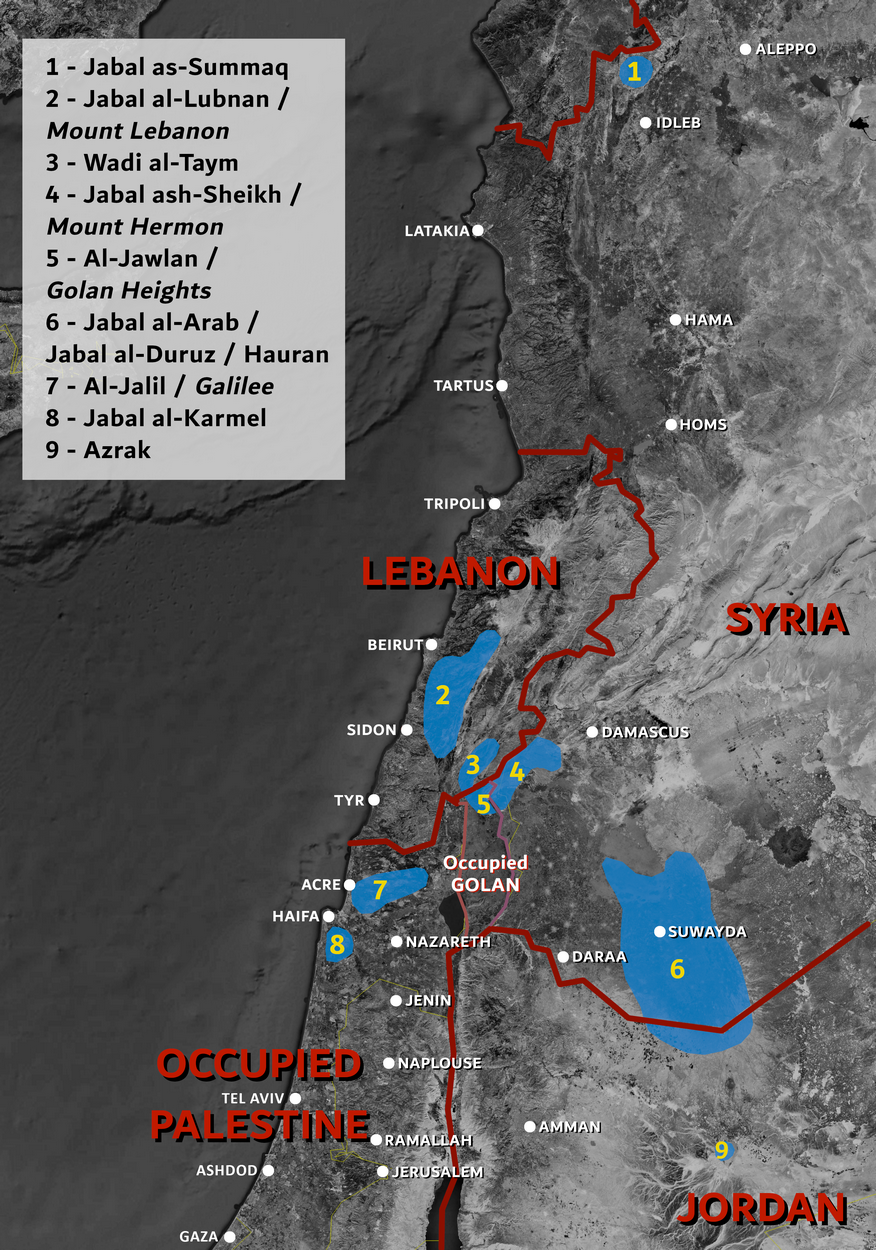Is Ahmed Al-Sharaa mocking the Syrians?
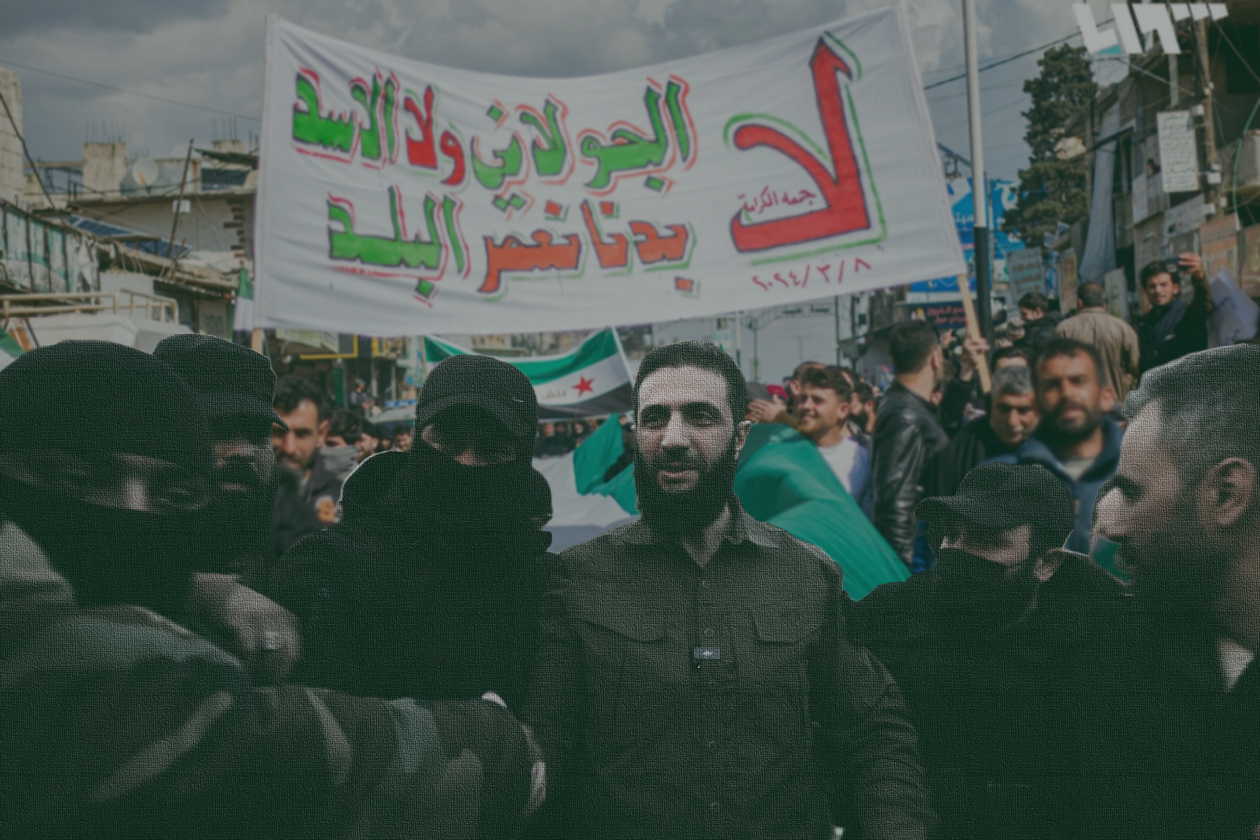
The fall of the Assad regime on December 8, 2024 was an undeniable liberation for millions of Syrians, who suddenly and unexpectedly emerged from fifty years of totalitarian barbarism that had transformed Syria into a field of ruins doubling as a concentration camp archipelago, since which several hundred thousand civilians have disappeared or been forced into exile.
Liberation, not revolution
As early as December 9, Ahmed al-Sharaa proclaimed himself leader of the new Syria, categorically rejecting all forms of power-sharing, decentralization and federalism, while taking care never to use the term democracy, before declaring in an interview with Syria TV on December 15 – just one week after the fall of Assad – that it was now “crucial to abandon the revolutionary mentality”. It is legitimate to ask: When was Al-Sharaa ever revolutionary?
On December 29, Al-Sharaa asserted that no elections could be held for another four years, which is understandable given the deplorable situation of Syrian civil society, but not at all reassuring coming from a person who rejects the very concept of democracy, whatever its form. At the same time, he announced the forthcoming adoption of a new constitution at a hypothetical National Dialogue Conference, which would bring the transition period to a close. At this stage, the most optimistic were still waiting to “see what happens”.
On January 29, Al-Sharaa was appointed President of the Syrian Arab Republic by the Syrian General Command (embodied by himself) at a “Victory Conference”. The Syrian constitution and all the institutions inherited from the Baath Party and the Assad dictatorship were subsequently abolished. No one will regret them.
On February 12, Al-Sharaa set up a 7-member preparatory committee[1] to organize the National Dialogue Conference, which took 10 days to prepare and opened on February 24. It brought together 600 people – many of whom had been invited less than two days earlier by SMS – and excluded any representation from the Syrian Northeast Autonomous Administration and the Syrian Democratic Forces. The discussions lasted just one day, and objectively achieved nothing, apart from a superficial reaffirmation of the needs already formulated by everyone: transitional justice, respect for public and political freedoms, the role of civil society organizations in rebuilding the country, constitutional and institutional reform, respect for national sovereignty and the State monopoly on arms. To this was added a symbolic declaration condemning the Israeli incursion.
On March 2, Al-Sharaa set up a 5-member committee[2] to draft a proposed constitution, which was drawn up in 10 days and adopted on March 13 for a 5-year transitional period. The new constitution stipulates that the president must be of Muslim faith and makes Islamic jurisprudence a pillar of constitutional law, while pledging to “protect minorities”, as Bashar al-Assad had also pledged. Four days later, several hundred Alawite civilians were massacred on the coast.
On March 29, Al-Sharaa dissolved the provisional government led by Prime Minister Mohammed al-Bashir, replacing it with a Transitional Government and appointing 23 ministers[3], nine of them from HTS. With civil society insisting on respect for diversity and women’s rights, Al-Sharaa appointed the only woman in the government, also a Christian, to the post of Minister of Social Affairs. If he’d wanted to be cynical, he couldn’t have done a better job. In addition, all ministers are now appointed directly by the President, while the position of Prime Minister has been abolished. It should be pointed out that a presidential regime without a prime minister is not very different from a monarchy.
In less than three months, Ahmed al-Sharaa has subtly and without opposition established himself as head of state, implementing a presidential regime that can best be described as autocratic.
Political transition in the shadow of the Astana agreements
Since 1970, Syria has followed in the footsteps of its Russian sponsor. If we are familiar with the Russian system of power and analyze the Syrian system under Assad, we discover the same modes of predation, plunder and clan-based corruption, the same cynical contempt of the loyalist elites for the majority of the people, the same policy of abandonment and voluntary impoverishment of the country, but also and finally the same collective cult of the leader, Even if he clearly lacks charisma. Ironically, Assad came to power at the same time as Putin, becoming both his copy and his disciple. Since the start of the popular revolution in 2011, Assad has acted exactly as Putin does or would do in his own country in the event of an insurrection, by denying the very existence of the revolt and causing half the country’s population to die, disappear or flee, rather than engaging in any semblance of reform that might win back a modicum of popular support. Obstinacy and criminal denial are what Assad and Putin have most in common. The only real difference between them is that Putin has not yet experienced a full-scale popular uprising, and has therefore not had the opportunity to deploy his totalitarian know-how to the full.
In reality, nothing could be worse than the Assad regime, and the only valid comparison would be with the Stalinist dictatorship. The model remains Russian, always. Consequently, the shadow of Russia will not cease to hang over the lives of Syrians overnight. What’s more, it’s legitimate to think that Assad’s downfall could only have been achieved with Putin’s cooperation or consent. Before crying conspiracy, let’s recall a few facts we all know.
Russia has no friends, only clients, vassals and debtors. Syria has lived on Russia’s and then Iran’s credit for several decades, and their interventionism in the Syrian civil war was motivated by the need to repay the debts contracted by the Assad clan. Like the United States, Turkey and the Gulf petro-monarchies, each has placed its pawns on the Syrian chessboard, modifying alliances and geostrategic priorities according to circumstances and their fluctuating interests. Against their will, or even without their knowledge, Syrian communities and factions have become the proxies of a game that has quickly overtaken them. And any attempt to detect a logic based on polarized alliances, axes or camps with clear demarcations is bound to be misguided or mistaken. There are no friendships or solidarities between states, only opportunities and maneuvers.
From the outset of the popular uprising in 2011, Iran and Hezbollah were the first to intervene to protect the Syrian regime and keep control of the routes between Iraq and Lebanon, while developing their military-commercial hold in Syria. The USA, Saudi Arabia, Qatar and Turkey, with logistical support from Jordan, Great Britain and Israel, intervened in parallel, supplying arms to nearly fifty groups linked to the Free Syrian Army and the Syrian opposition embodied by the Syrian Interim Government in exile (in Turkey), including Islamist groups linked to the al-Nosra Front and united from 2015 under the umbrella of the Army of Conquest. Qatar and Turkey are thus among the main creditors of the al-Nosra Front (2012-2017), then Jabhat Fatah al-Sham (2016-2017) and Hayat Tahrir al-Sham (2017-2025).
With the Russian intervention, the capture of Kobane and the Paris attacks by the Islamic State in 2015, the strategies of both sides have evolved. The Paris attacks, following on from Assad’s release of Islamist prisoners in 2011, largely contributed to the international community turning its gaze away from the regime’s barbarity to focus on the jihadist scarecrow. Each has thus justified its intervention in Syria by the fight against the Islamic State: the United States gradually withdrew its support for Salafist groups to redirect it in favor of the Kurdish YPG/YPJ, then the FDS, with a focus on the fight against the Islamic State, while Russia sent its Wagner mercenaries to recruit Syrians into the “ISIS hunters” battalion before sending them to secure the regime’s oil farms or serve as cannon fodder in Libya (which Turkey also did). But in reality, the Islamic State was struck with one hand and fed with the other by Turkey, Russia and the Assad regime alike, which never ceased to dispose of jihadist cells as it suited them, moving them from right to left to commit atrocities to divert attention from their own crimes and intrigues, destabilizing certain areas or populations that bothered them, or to legitimize the use of force where they lacked sufficiently valid reasons. The jihadist is a practical tool.
And contrary to popular belief, Russia, the United States and its allies (Jordan, Israel and Turkey) have not clashed militarily on Syrian soil[4]. On the contrary, in 2016 and 2017, the US, Russia and Turkey reached an agreement to set up joint air operations aimed at striking Islamic State and al-Nosra Front[5] [6]positions. Following on from this, Russia signed agreements with the USA, Israel and Jordan in 2017[7] [8] to keep the Islamists (Hezbollah and Islamic State) out of the Golan Heights and the Jordanian border, which led to the recapture of Deraa by the Syrian regime and Russia in 2018, culminating in the elimination of the Islamic State pocket in the Yarmouk basin and the surrender of the Deraa rebels as well as their integration into the normalization processes with Assad. It should be noted that all the agreements signed by Russia were signed with the consent of Bashar al-Assad[9]. Without going into further detail, it is quite clear that in the Syrian context there has never been any real duality between the “axis of evil” and the “axis of resistance”.
As early as 2015, two influential figures close to the Syrian and Russian regimes, Randa Kassis and Fabien Baussart, had begun suggesting the implementation of a peace process for Syria at a conference in Astana, Kazakhstan. After two years of fruitless talks in Geneva under the aegis of the UN, Astana finally established itself in 2017 as a negotiating space between Russia, Turkey, Iran, the Assad regime and a dozen Syrian rebel factions, led by Jaysh al-Islam, with the UN relegated to observer status. Russia and Turkey clearly showed their leadership in the discussions, with Russia even proposing a draft constitution for the future “Republic of Syria”, introducing a decentralized, federalist and secular system that would abolish Islamic jurisprudence as the source of law. Turkey, the Arab League, the pro-Turkish opposition and Al-Assad were categorically opposed to any form of federalism. To better understand the content and outcome of these talks in the light of recent events, it may be useful to recall that Russia had proposed Assad’s resignation back in 2012, but that this proposal had been refused by the USA, Great Britain and France on the pretext that Assad was “about to be overthrown” (sic). It seems that Turkey has taken the lead over Russia in these negotiations between 2019 and 2023, before designing in its corner the modalities of the political transition in Syria. Russia has been stymied by Bashar Al-Assad’s obstinacy in believing himself invincible and obstructing any proposals for constitutional reform, particularly since his return to the international stage at the Arab League summit in Jeddah in June 2023.
On the eve of the regime’s fall, Russia, Turkey and Iran met in Doha in the presence of 5 members of the Arab League (Egypt, Saudi Arabia, Iraq, Jordan and Qatar) to declare the end of hostilities. In the wake of this, the Russian air force suddenly halted its strikes after nine years of incessant bombing, and Russian troops peacefully withdrew to their bases in Hmeimim and Tartus, where they remain to this day in application of the Doha agreements. Under these agreements, Russia gave Assad, his clan and his allies guarantees of security and amnesty in exchange for the general withdrawal of his army, while Iran negotiated the protection of Shi’ite holy sites. On the evening of December 7-8, Assad’s inner circle packed their bags, before being efficiently evacuated by plane from Syria to Russia and the Gulf States, including Bashar Jaafari, the main negotiator of the Astana agreements and Syria’s ambassador to Russia[10]. All without Israel shooting down their aircraft in flight, obviously.
As early as December 29, 2024, Al-Sharaa declared that Syria shared deep strategic interests with Russia, evacuating out of hand its manifest complicity with the Assad regime and the latter’s responsibility for the massacre of thousands of civilians since 2015[11].
At the end of January 2025, a Russian delegation led by Foreign Minister Mikhail Bogdanov and Russian Special Envoy to Syria Alexander Lavrentyev came to Damascus to set the framework and criteria for further bilateral relations. Al-Sharaa then laid down its conditions, demanding financial compensation for the crimes committed and the extradition of Assad to Syria, knowing full well that Russia would never agree.
At the beginning of March, just as the massacres on the coast had driven hundreds of Alawite civilians to take refuge on the Hmeimim base, Russia hypocritically offered its help to stabilize the situation in Syria. The following month saw the beginnings of a new military cooperation with Turkey and Russia, with Al-Sharaa admitting that the bulk of Syria’s military equipment was supplied by Russia, that Syria remained dependent on numerous contracts with Russia in the food and energy sectors, and that its veto power at the United Nations posed a serious threat to the prospect of lifting the sanctions that were heavily affecting the country.
What we can conclude from all this data is that the destiny of the Syrians will remain intimately linked to the desiderata of Erdogan and Putin. We could call this constraint the “Curse of Astana”.
What about foreign jihadists?
First, a few biographical and contextual facts.
Ahmed al-Sharaa was born in 1982 in the same place as Osama bin Laden – Riyadh, Saudi Arabia – and lived in Syria between 1989 and 2003. Before the start of the American invasion of Iraq, he went to Baghdad, where he joined the Iraqi branch of Al-Qaeda, which its leader Abu Musab al-Zarqawi had just founded after pledging allegiance to Bin Laden. Arrested in 2006, he then spent five years in American prisons. Released after bin Laden’s elimination on May 2, 2011, his successor Ayman al-Zawahiri sent al-Sharaa to Syria in August to establish the Syrian branch of al-Qaeda, Jabhat al-Nusra, in collaboration with the Islamic State in Iraq then led by Abu Bakr al-Baghdadi. As fate would have it, at exactly the same time, Bashar al-Assad amnestied and released hundreds of Islamists from Sednaya prison, including a number of notorious militants[12] who simultaneously set up, within a quarter of their release, the main Salafist groups responsible for the fragmentation and subsequent Islamization of the Free Syrian Army (FSA): Liwa al-Islam, Suqour al-Sham and Ahrar al-Sham.
In the world of Islamist armed groups, armed confrontations, wars of power, alliances of circumstance and recompositions have followed one another unceasingly, culminating in large-scale mergers in 2017 within the Syrian National Army (Jaysh al-Watani as-Suri) and the Levant Liberation Organization (Hayat Tahrir al-Sham, HTS), under the aegis of Turkey. These recompositions coincide with international negotiations within the framework of the Astana process mentioned above. This was the moment when a number of Islamist factions, faced with a stalemate in their trench warfare with the Assad regime, were prompted to change their strategy and adopt a nationalist and revolutionary rhetoric, while cleaning up on their most radical wings. Al-Sharaa’s associate and accomplice since 2011, Anas Hassan Khattab, held the position of HTS intelligence officer[13], a position he retains in the Syrian government. In this position he was responsible for eliminating HTS rivals in the Idleb pocket, notably Hurras al-Din and DAESH cells, an operation he carried out in collaboration with Turkish and US intelligence services.
Their jihadist approach was then gradually abandoned in favor of a political and technocratic management of the areas under their control, embodied in particular by the new Syrian Salvation Government. Clearly, Turkey and Russia exerted a major influence on the evolution of the Syrian rebellion at this time, even though the two main factions forming HTS did not participate in the Astana negotiations[14]. Nevertheless, no one is deceived by the role played by the two imperialists in this cynical game of chess.
At that time, Ahmed al-Sharaa was still Abu Mohammad al-Joulani, and whatever his populist strategy of “Syrianization” to become a credible interlocutor on the international stage, everyone knows very well that he could never have kept control of the situation without keeping at his side the jihadist dogs of war that have always formed the core of his troops. And among them, the hundreds of international jihadi hitmen whom he would need to thank should he win the final battle to topple Al-Assad.
This is precisely what happened after the fall of the regime. In late December 2024, Al-Sharaa appointed several Syrian and foreign jihadists[15] and war criminals from its inner circle to positions of authority in the new army, referring to the forthcoming dissolution of the Hayat Tahrir al-Sham group as a precondition for lifting sanctions against the HTS leadership and Syria. A month later, 18 armed factions declared that they were disbanding to join the new national army, although no official list of the factions concerned was made public.
In concrete terms, hundreds of criminals benefited from a general amnesty and the normalization of jihad. A month later, the transitional government announced that it was considering granting citizenship to foreign anti-Assad fighters who had lived in Syria for several years, a decision that would not prevent the lifting of sanctions against Syria, even though this appeared to be a central demand on the part of the United States.
Rewarding its mercenaries seems more important than finally alleviating the suffering of Syrians: normalizing international jihad or Syrian revolution, Al-Sharaa seems to have chosen. We can also read in the background that the new strongman of Damascus may not have a complete choice, and that after years of trying to purify his ranks of the most extremists following the wise advice of his Turkish godfather, nobody knows better than he does that the only way to continue reigning supreme over a furious horde is to keep it close to you and share pieces of the feast with it. Nor is he unaware that many jihadists want him dead, especially now that he’s shaking hands with all their sworn enemies.
To illustrate this nepotism, the provisional government announced a few days earlier that it had begun the process of revoking the citizenship of almost 740,000 foreign pro-Assad fighters, including Iranians, Iraqis, Afghans, Pakistanis and Lebanese. Where there’s a will, there’s a way. Rather than guaranteeing justice for all crimes committed against Syrians, Al-Sharaa’s decision confirms that all foreign mercenaries are not treated equally. Hence, his own can continue to persecute infidels and heretics in peace.
Sectarianism and tribalism: the twin scourges of Syria
When Turkey whispered in Al-Sharaa’s ear that federalist demands must not be given free rein, it was a clear message not only to the armed Kurdish factions, but also to all other armed and political forces drawn from minorities. Everyone immediately thought of the Alawites and the Druze. The former have no armed factions attached to communal demands, apart from the remnants of the regime who are still hiding here and there, but who neither represent nor protect their community. The latter, on the contrary, benefit from powerful community self-defense structures embodied by more than twenty factions committed to protecting the integrity, interests and cultural identity of their community, while enjoying solid solidarity networks among Druze communities abroad, particularly in occupied Palestine, Lebanon and among the diaspora in the rest of the world.
For the new authority in Damascus, the three communities represent a considerable balance of power and diplomatic stakes, and even a threat to the hegemonic, centralized and mono-confessional state project defended by Al-Sharaa and its main international sponsors: Turkey, Qatar and Saudi Arabia. On the other hand, Russia, the United States and Israel are on the lookout to exploit the three communities’ demands for autonomy or decentralization, while Europe and the UN are eternally applying the same paternalistic schemes that would have us believe that minorities need protectors – and therefore a protectorate – even though a majority of the populations we’re talking about don’t wish to be chaperoned or protected by foreign powers. But whatever the true opinion of the various populations, the sectarianism that the Assad regime has promoted for several decades continues to prevail over any egalitarian or democratic consideration. Conspiracy theories, binary analyses and even analyses clearly based on sectarian or xenophobic biases combine with the aggressive propaganda of the various imperialisms to produce a constant media noise in which it is impossible to see clearly and keep a cool head. In contrast to 2011, when instant communication was still relatively undeveloped, social networks are now joining the traditional media in conveying and giving resonance to the most implausible rumors, which are nonetheless credible enough to incite anyone to violence and denial of the crimes committed. This is how, when the regime fell, the paranoid fantasies of the West about the massacre of minorities came true in part, like self-fulfilling prophecies, but less suddenly than predicted.
Before continuing, it is absolutely essential to distinguish between the scenario of the Syrian Coast massacres in early March and the violent confrontations targeting the Druze community in early May. In the former case, it was the remnants of the deposed regime, united in groups called the “Coastal Shield Brigade”, the “Military Council for the Liberation of Syria” and the “Syrian Popular Resistance”[16], who initiated the confrontation with the central authority in Damascus. Several sources suggest that these groups, made up of war criminals and torturers who remained loyal to Assad, were supported by Russia and/or Iran in an attempt to foment a takeover of power on the coast, or even beyond. In any case, these few hundred remnants launched a coordinated offensive against checkpoints, government buildings and hospitals, seizing entire districts in the towns of Jableh, Baniyas and Qardaha and indiscriminately attacking civilians and the Security forces who had arrived to put an end to the insurgency. In the bosom of General Security and in response to its call for volunteers on Telegram[17], thousands of radical fighters more or less affiliated to Salafist groups, themselves more or less affiliated to the Syrian National Army and Hayat Tahrir al-Sham, rushed to the coast with the intention of punishing loyalists as well as the entire Alawite civilian community from which they hail. Among these, there are still groups that have not disbanded, and are even hostile to Al-Sharaa, but regard General Security as one of the armed wings of the Sunni community seeking revenge. The loyalist insurrection and the ensuing ethno-confessional cleansing resulted in the massacre of between 823 and 1659 civilians and the death of around 260 fighters on each side[18], with both sides participating in the massacre of civilians.
In the second case, it all started with the broadcasting of a false recording insulting the Prophet Mohammed and attributed to a Druze clerick, Marwan Kiwan. From a polemic on social networks, the situation quickly evolved into a sectarian and xenophobic riot at Homs University, initiated by petro-engineering student Abbas Al-Khaswani, who had taken part in the bloody offensive against the Alawite community the previous month. This student was filmed delivering a hate speech against the Druze, Alawites and Kurds, followed by a mob of students circulating around the university grounds, randomly attacking seemingly non-Muslim students. The transitional government initially thanked the rioters for their religious zeal in defense of the Prophet, before timidly denying the authenticity of the audio recording. In the 48 hours that followed, armed groups stormed the predominantly Druze (and Christian) towns of Jaramana, Sahnaya and Ashrafiyet-Sahnaya, although it is not clear who these groups were composed of. However, a number of corroborating sources point the finger at networks of Bedouins and Islamist fighters from Deir Ez-Zor, Dera’a and Ghouta. In response, Druze factions in Suwayda mobilized and a convoy set off on the road to Damascus to support local factions in Sahnaya. The convoy was then ambushed, resulting in the death of more than forty Druze fighters, before a further ten villages in the Suwayda region were attacked for three days by groups from Dera’a and the region’s Bedouin tribes. General Security finally deployed its forces all around the governorate to prevent further groups from entering from Dera’a, but this stranglehold on the region was accompanied by pressure on Druze leaders to agree to the disarmament of factions and the entry of General Security forces into Suwayda, which was refused. In exchange, an agreement was reached on the activation of the police and General Security in the governorate, on the sole condition that all its members be from the region. When General Security withdrew from the only village it had occupied, residents found their homes and holy places burnt and looted. Two days after the end of hostilities, dozens of Suwayda students left their universities in Damascus and Homs, while the road to Damascus remains threatened by armed groups who have fired on vehicles and placed a checkpoint under their control, while General Security seemed powerless or complicit. At the same time, the transitional government has surprisingly appointed three Bedouin tribal leaders from Deir Ez-Zor to head the intelligence, anti-corruption and supreme council of Syrian tribes and clans[19]. It’s legitimate to wonder whether this is voluntary gratification or the result of blackmail and pressure tactics exerted by the powerful Bedouin tribes of the Al-Uqaydat confederation to reclaim a slice of the cake.
What these events say about Syria today is that you can’t remain President of Syria without, on the one hand, exacerbating intra-community prejudices and tensions in order to retain control over the regions, and, on the other, being endorsed by the country’s most reactionary forces and their allies abroad. It also demonstrates that Syrian society has not yet healed, nor is it likely to do so in the near future, from the diseases of sectarianism and the clanism that goes with it. After decades of intellectual regression and depoliticization accomplished with the whip of the Ba’ath’s national socialism, Syria has gradually returned to its pre-existing tribal and feudal reflexes. In this fertile breeding ground, the Islamic model – which rejects secularism, democracy and popular representation – once again gives free reign to the heads of large families (sheikhs), warlords and other Emirs, whose ability to impose a balance of power will determine their proximity to this power and their legitimacy in sharing its usufruct. Al-Sharaa’s own seizure of power demonstrated that all it takes to be legitimate is to be the strongest. And whoever can demonstrate military strength as well as loyalty will be duly thanked. This is what the leaders of the armed groups who fought for the fall of the regime have obtained, and who have agreed to dissolve their groups within the national army. It’s also what the Al-Uqaydat confederation may have just obtained, after responding to the call to teach the “heretics” of Suwayda a lesson, while agreeing to withdraw once the government had obtained an initial compromise from the Druze leaders.
The virile, archaic adventure of crossing the desert to subjugate unsubmissive neighbors in order to demonstrate allegiance to the sultan and his pashas reflects a return to the feudal model that preceded the French colonial mandate. What distinguishes it, and gives the current situation an all the more terrifying dimension, is the persistence of the racist and genocidal dehumanization practices introduced by the Western colonialists, adapted to the local context by the jihadists[20] since the 1980s and brought to a climax by the Assad dictatorship. Perhaps the most notable expression of these new modes of virilist terror is the filming of Alawite men barking while Druze men have their moustaches shaved, before taking them away in shackles to an unknown destination. In truth, there is nothing to distinguish this racist practice from that of Israeli soldiers against Palestinian Arabs, which reinforces the idea that it is indeed an import from the West. Thus, a significant part of the younger generation of Sunni Muslims who did not participate in the 2011 revolution but grew up during the civil war seem to be following a similar path of fascization to that of Bashar’s shabiha[21], notably by flooding news feeds and social networks with sectarian publications and comments advocating revenge and murder in the name of defending their allegedly threatened ethno-confessional identity. The paranoid logic of believing that everyone around you wants to destroy you naturally induces a reflex of withdrawal into oneself and around the charismatic leader who is supposed to guarantee your protection. So it’s not surprising to see Al-Sharaa presented by Sunni Muslims – especially the younger ones – as the providential hero of a revolution carried out exclusively by and for their community, while other communities are denied their participation in the revolution against Assad. The Revolution of all Syrians appears to have been hijacked by apologetic and mystical discourses presenting HTS’s seizure of power as a divine achievement, likened to the return of the Umayyads for some, or the Ottomans for others. It’s the Ummah rewarded. We shouldn’t be surprised, therefore, that Al-Sharaa celebrated its victory at the Umayyad Mosque, and that old takfirist Imams such as Sheikh Adnan al-Arur – who is known for systematically peppering his sermons with interfaith hatred – are invited back to Syria after years of exile and welcomed there as masterminds of a Sunni revolution that would have prevailed over “45 years of minority rule[22]”. Meanwhile, in the shadows, a majority of moderate, progressive and pacifist Sunni Muslim Syrians – including the federalist Kurds – are once again essentialized by the extremism of a minority that agitates in the spotlight, and holds power by force of arms.
The ultra-confessional interpretation of social and political relations by fundamentalist clerics, to which members of the government and their supporters continue to belong, leads to dangerous simplifications that result in the Assad family being absolved of responsibility for its dictatorship by an entire community, the Alawites, or even all the minorities associated with them: Shi’ites, Druze, Ismailis or even the Murshidis[23], of whom hardly anyone ever hears, but of whom a dozen members have been executed since December by “unidentified individuals” in Latakia, Hama and Homs. Similarly, several hundred civilians, including children and women, have been murdered since the fall of the regime, particularly in the Homs countryside where some villages have seen several of their residents executed on the same day by armed groups intervening as part of or alongside the “security operations” carried out by General Security[24]. So it’s not a revolution that has been taking place in Syria since December 2024, but the revenge of 50 – 60% of Syrians against everyone else. As a result, we can better understand the new authority’s reluctance to implement the transitional justice mechanisms needed to complete the revolution: not only is this not a priority, since it would highlight the persecution of all communities without exception, but also because it would lead to many of the new authority’s representatives themselves being incriminated and prosecuted for their crimes [25].
No transitional justice, no peace
The demand for justice was pounded out by the collectives of families of the disappeared from the very first hours after the fall of the regime, when the world was pretending to discover for the first time the extent of the horror it had represented. Syrian society, which has suffered violence without being in a position to inflict it, is unanimous: no social peace or regime that respects Syrians can exist without transitional justice. If Syrian communities are to heal from half a century of dictatorship and live together once again, the representatives of the new government have no choice but to arrest as quickly as possible all the dignitaries of the regime and all those who actively participated in the disappearance, torture and murder of tens of thousands of Syrians. Obviously, when we refer to justice, we’re not speaking of summary executions, show trials, closed-door hearings and public killings that reproduce the traumas generated by Takfirist barbarism, but of transparent justice that respects the fundamental principles of the right to defense and the dignity of the accused. Avenging blood and humiliation with blood and humiliation is not what Syrian society needs. On the contrary, in order to regenerate itself and emerge from the cycle of violence, it needs to demonstrate fairness and integrity, but also severity, towards those who have shown nothing but sadism and cruelty towards it. The objective must remain resilience, not the mere primary satisfaction of revenge instincts.
It is also clear that the systematic prosecution of all members of the deposed regime’s army and militias is not possible and would be an extremely dangerous undertaking, leading to large-scale purges and endless settling of scores. A very instructive interview with the Director of the Syrian National Network for Human Rights, Fadel Abdul Ghani, published by the Syrian media Enab Baladi[26], describes the transitional justice process that could potentially be implemented in Syria. In it, Abdul Ghani distinguishes between a judicial component and a civil component, the latter taking the form of “Truth and Reconciliation” commissions. He estimates the number of perpetrators of war crimes and crimes against humanity linked to the former regime at 16,200, 90% of whom would be military personnel, and considers that only first- and second-rank army officers could be concerned by criminal proceedings, while third- to sixth-rank officers would be included in the program of reconciliation commissions. Non-military officials, including businessmen, would not be exempt from prosecution.
It is currently impossible to know whether this coherent framework has been accepted and implemented by the new authorities. Beyond the brief communication from the Ministry of the Interior on its Telegram feed at the time of their arrest, there is no transparent mechanism for determining the fate of those under investigation. No special court has been mentioned, nor any judicial deadline. For the past four months, the self-proclaimed government has shown a deplorable lack of commitment to this issue, and the impunity enjoyed by some of the former regime’s high-ranking criminals is helping to erode Syrians’ confidence. The diplomatic evacuation of the Assad clan to Russia and the United Arab Emirates was already a first betrayal of the Syrians and the Revolution. The appointment of a whole series of takfirists and war criminals to positions of responsibility, while promising foreign takfirists access to citizenship, was a second.
Beyond these highly flawed decisions taken in the name of short-term stability, the new authority has also arrested a number of notorious criminals from the former regime, only to release them due to “lack of evidence”, “ regularizing” their situation or even granting them outright amnesty. The best example is undoubtedly that of the Commander-in-Chief of the National Defense Forces (Quwat ad-Difa’a al-Watani), Fadi Ahmad aka “Fadi Saqr”, who is directly responsible for numerous massacres, the best known of which is that of Tadamon in April 2013, or that of Talal Shafik Makhlouf, Commander-in-Chief of the Republican Guard and Director of the Office of the Commander-in-Chief of the Army and Armed Forces, responsible for the murders of numerous demonstrators during the peaceful protests in Douma, Harasta, Nawa and Dera’a in 2011. To these can be added the cases of Mohammad Ghazi al-Jalali, former Minister of Communications and then Prime Minister, and Mohammad al-Shaar, former Minister of Interior[27], as well as a number of other high-ranking figures in the repressive apparatus of the Assad regime, who have since benefited from so-called “regularization” measures in exchange for their collaboration. Thus, on February 7, 2025, the residents of Tadamon reacted angrily to Fadi Saqr’s visit to the scene of his own crimes in the company of General Security officials, with the stated aim of “coming clean” by denouncing his former accomplices[28]. Two months later, the authorities were conspicuous by their absence from the commemoration of the April 16 massacre, while no security perimeter or forensic investigation of any significance has been set up on the block of buildings that served for several years as the National Defense’s “execution zone”, and where mass graves still undoubtedly exist. On the contrary, Fadi Saqr was appointed to head a reconciliation commission sent to the Syrian coast following the massacres of early March, a position from which he negotiated the release of former Assad regime officers arrested on that occasion. To say the least, empathy and consideration for the trauma of victims and survivors are not hallmarks of the new authorities. More recently, other notorious servants of the ousted regime have continued to make public appearances and use their privileged social position, even ostentatiously appearing alongside representatives of the new authorities[29].
Finally, and perhaps most disturbingly, the new authorities ostensibly disregarded the file on prisoners and the disappeared[30], leaving families without support or answers[31], while neglecting for many weeks to protect the archives of over 800 security services and places of detention, before finally deciding to partially restrict public access[32]. The al-Marjeh square in Damascus, where relatives of the disappeared used to meet in the weeks following the fall of the regime to support each other and gather information, was suddenly cleared of hundreds of photos of the disappeared in January as part of a vast clean-up campaign initiated by the Civil Defense and entitled “Damascus, we’re back”, while a collective called ‘The Hands of Mercy’ caused a scandal by covering the inscriptions left by inmates on the walls of a prison with paintings in praise of the revolution, with the prior approval of the authorities. The indifference and negligence of the latter, or even their eagerness to wipe the slate clean, is not reassuring, even if the most optimistic find good reason to persuade themselves that it’s normal and natural for things to take time, that the authorities are doing their best or that the processes underway offer encouraging signs. With five months to go since the fall of the regime, this persistence in relativism and lack of critical judgment regarding the carelessness, but also the nature and liabilities of most of the representatives of the new state apparatus, has become almost naïve and reckless. As for the relatives of victims and missing persons, they continue to be animated by the same hope that has enabled them to survive all these years. Nothing is really being done, in action or in words, to enable them to find peace.
Syria, a deprived society in the grip of Islamist neo-conservatism
The disastrous state in which Assad has left the country testifies not only to the incredible resistance and resilience of the Syrian people, but also to the inestimable capacity of human beings to survive in the most abominable circumstances. When we look at the Syrian economy, we realize just how devastated the country is and how much its infrastructure has been destroyed. And when we say destroyed, the word is inadequate: Syria is a hollowed-out, rusting wreck whose skeleton was already beginning to be eaten away before the fall of the regime. The regime’s soldiers were selling furniture and looted goods to feed themselves, and when the end came, they didn’t even wait for the enemy to approach before abandoning their weapons and uniforms, while the population was already rushing into all public buildings to loot absolutely everything they could. What’s most astonishing about the Syria afterwards is the absolutist nature of the looting: it’s not just the furniture that’s been taken away, but also the cables, pipes, doors, windows, tiles and bricks that have been ripped out, and now also the metal beams, bricks and breeze-blocks that make up the very structure of the buildings. Let’s not even mention vehicles (including tanks) and trees, which have been methodically removed or chopped up, transforming the entire public domain into a wild wasteland. And if you look closely at the cities and districts razed to the ground by the bombs, you’ll see that every single building in ruins has been absolutely stripped of every single small object, as if every single one of the thousands of apartments demolished in this way had been conscientiously purged of everything it contained. This was carried out by the regime’s own agents and soldiers, as certain districts were off-limits until the fall of Assad. Between Damascus and the governorate of Suwayda, the looters went so far as to knock down high-voltage pylons, cutting them up and severing the power cables that supply thousands of homes with electricity. Everywhere, it’s hallali[33] and the smallest piece of the beast has a value.
Looting is one of the main afflictions plaguing the new Syria. The phenomenon existed before the fall of the regime and cannot be blamed on the new authorities, although it has only increased and absolutely nothing seems to have been done to put a stop to it or to protect the infrastructure. The only progress that could put an end to this self-sabotage by the Syrian population itself is the restoration of a stable economy, or at least a perceptible improvement in it. Yet it seems that the Syrian Central Bank has decided to apply a risky method, restricting liquidity[34] while refusing to intervene on the exchange rate[35] and curb illegal speculation on the Syrian pound, resulting in intense exchange rate volatility and considerable money losses for Syrians, in a country where 90% of the inhabitants continue to live below the poverty line. The main beneficiaries are speculators, while neither local investment and production nor exports have increased. The government does not print new currency, nor does it intervene to limit currency exchange to official exchange offices, with hundreds of small traders resorting to this activity to make a profit. Meanwhile, markets have begun to be flooded with low-priced products from Turkey and elsewhere, threatening the already fragile local production[36], while Syrians’ incomes have not seen any significant rise and the unemployment rate exceeds 25%. The new government seems to be relying exclusively on foreign investment. The current situation therefore foreshadows the capitalist predation to come, and with it another form of widespread looting, which will benefit speculators rather than the mass of Syrians. The pattern is well known: just look at the situation in Lebanon and Greece.
From this opportunistic perspective, international diplomacy did not wait two weeks to resume its normal course, as capitalist predators from the Arabian Peninsula and Europe were the first to flock to the presidential palace in Damascus with a view to restoring economic relations with Syria as quickly as possible and making the greatest possible profit from the new regional situation. On December 23, 2024, Qatar was the first foreign state after Turqui[37] to send a delegation to Syria to meet the new Syrian authorities, while Al-Sharaa made his first foreign visit on February 2, 2025, with a much-publicized trip to Saudi Arabia, during which he visited Mecca and introduced his partner Latifa al-Droubi to the world, before flying directly to Turkey[38]. Beyond the show, these visits testify to the desire to place Saudi Arabia and Qatar at the forefront of Syrian foreign policy. The two states plan to take back control of the energy sector by reviving electricity production fuelled almost exclusively by fossil fuels from the Gulf. That’s going to burn lots of gas[39]. Both began by delivering tons of humanitarian aid to Syria the day after their first official meetings, and also pledged to pay Syria’s $15 million debt to the World Bank, which foreshadows major investments: nothing is free. Germany and France were then the first European states to show up at the ex-jihadist’s door on January 3, 2025[40], followed by Italy on the following January 10, the three countries having been the main beneficiaries of Syrian oil exports[41] on the eve of the 2011 revolution. They were also the first to implement the suspension of asylum procedures for Syrians the day after the fall of the regime, and to advocate the lifting of sanctions against Syria, while France was the first European country to welcome Al-Sharaa on May 7, 2025, despite his continued blacklisting as a terrorist suspect. For Macron, the state of exception is a mode of government, and signing juicy contracts is worth turning a blind eye to the suffering of the Syrian people. All that al-Sharaa has been asked to do is to make a few symbolic statements in favor of the protection of human rights and justice. But like the Universal Declaration of Human Rights, a declaration is not binding and remains a mere promise whose primary aim is to buy social peace, and to deceive the most credulous liberals. Syria’s economic partners will never bother to make the restoration of trade relations conditional on the strict implementation, under international supervision, of a democratic system representative of Syria’s diversity, and of transitional justice excluding the death penalty and inhuman and degrading treatment. Instead, as mentioned earlier, we’ll just demand an oral commitment from Al-Sharaa to “protect minorities” and “neutralize the Islamic State”, as has already been the case for a decade with Bashar al-Assad. No big deal.
In the capitalist system, it’s all about deals and compromises. The conclusions of the commission of inquiry into the massacres on the Syrian coast can wait a few more months, until the sanctions against Syria are lifted and al-Sharaa can quietly retract its promises once international trade is restored. We are currently witnessing a historic transition towards a fusion of economic liberalism and societal conservatism, such as occurred in the United States under George Bush and his son George W. Bush, but in its Islamic version already in power in Saudi Arabia. So we shouldn’t be surprised if Syria’s fate depends on the relationship between Ahmed al-Sharaa, Donald Trump and Mohammed Ben Salman. Our article is timely, as all three are scheduled to meet in Saudi Arabia in a few days’ time…
Sharia is capitalism-compatible, and so is Ahmed al-Sharaa.
